When making cuttings of young pine seedlings – seedling cuttings – it’s important to use a potting medium that retains moisture. An easy way to achieve this is by using a potting medium like sand. Its small particles retain moisture and enough air for new roots to develop.
Although fine sand particles are good for developing new roots, they don’t provide the drainage the cuttings will need once new roots are established. For this reason it’s common to use several grades of soil when planting seedling cuttings.
In the past, I’ve used a solid cylinder to make a crater into which I pour sand that will keep cuttings moist. At a recent Bay Island Bonsai meeting, I learned a crafty technique that makes the process easier. I begin by filling a small plastic pot about half way full of bonsai soil. I then set an open cylinder, a section of 3/4″ irrigation pipe in this case, on top of the soil.
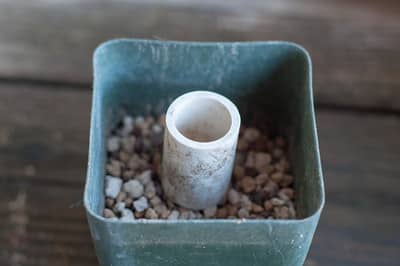
Plastic pot, bonsai soil, PVC cylinder
I then add more bonsai soil around the cylinder.
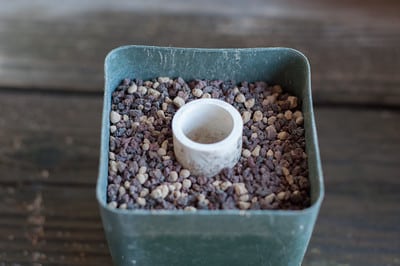
Pot filled with bonsai soil
Next, I fill the cylinder with sand and then remove it.
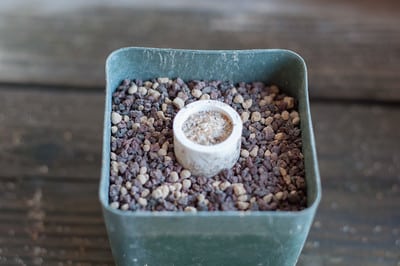
Cylinder filled with sand
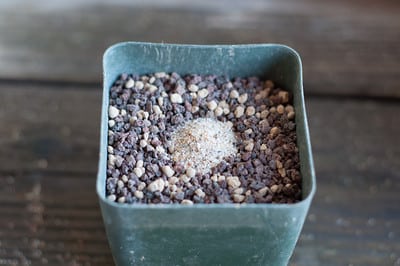
After removing the cylinder
I’d prefer to use a larger grade of sand, but fine is all I have right now. As an experiment, I replaced the sand with very fine akadama particles, the result of sifting through akadama “dust” with a very fine sieve.
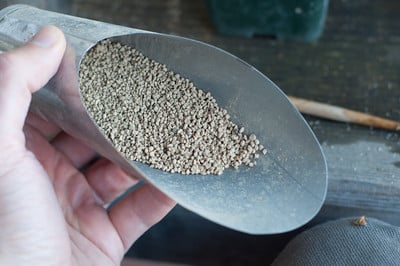
Fine akadama particles
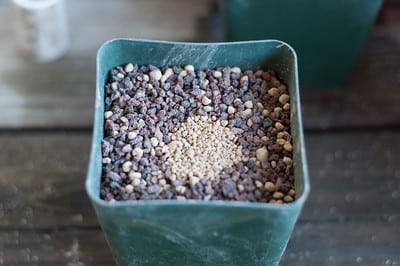
3″ pot with fine akadama
After filling the pots with soil, I watered them and poked a very small hole for the cuttings. I made the cuttings, applied root hormone, dropped them into place, and then watered them again (see “How to create seedling cuttings” for details).
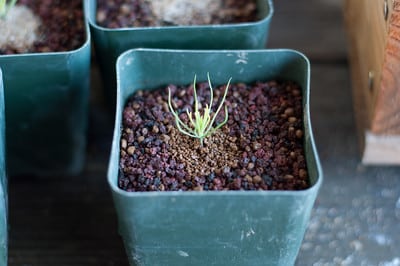
Cutting in fine akadama
To preserve additional moisture, I added a little sand on top of the akadama.
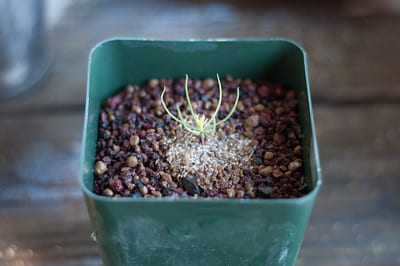
Sand sprinkled on fine akadama
I used individual pots for my red pine seedling cuttings because only a few were mature enough to make the cuttings. Far more of my black pine seedlings were ready. Instead of planting these into individual containers as I usually do, I planted them in rows in a larger pot. Two of the rows are planted in sand and two in fine akadama covered with a little sand.
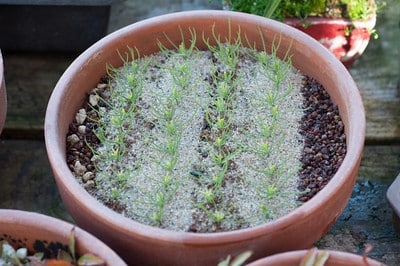
Seedling cuttings in terra cotta pot
Once the cuttings root, I’ll repot them into individual containers and start fertilizing. Until then, I’ll keep them under shade cloth with my other cuttings.
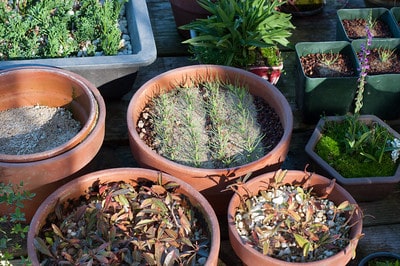
Cuttings in the shade
The first time I made seedling cuttings I created a mini-hot house to maintain humidity while the cuttings rooted. It was essentially a plastic box I set over the pots with the cuttings. Now that I have a watering system, I leave the cuttings in the open so the system can keep them moist. In the future, I may create a box with a mister inside to keep the humidity even higher.
Subscribe to Bonsai Tonight
New Posts Delivered Every Tuesday and Friday
Daniel Dolan says
Jonas:
I have asked many expert Bonsai folks this question about root hormone application and so would appreciate your response.
Most folks relate that they apply root hormone……..in many different applications…….and water.
Doesn’t the water completely wash the root hormone powder off of the area to which it was applied….in the first watering much less successive waterings?
The response of many is…yes. So how does it actually benefit the plant?
Thank you for all your work.
Best regards,
D/D
Chicago
tmmason10 says
Great idea, thanks for sharing Jonas. In a few weeks I have a few cuttings to make so I will probably use this technique.
Rusty says
Jonas, I hope you are not sick of all my questions – I feel like this post was written especially for me 🙂
I really appreciate you sharing the knowledge!
Thank you.
rusty
Jonas Dupuich says
Thanks – everyone – for the questions. They’ve helped me learn a lot over the years.
Daniel – I don’t know enough about root hormone application to provide a good answer for this. I’ve used root hormone on the recommendation of others without looking into how it works or learning about optimal application methods. It would be fun to hear from an expert on the topic.
Rui Marques says
IMO, better than hormone powder is a Rooting Compound Gel named clonex
Jonas Dupuich says
Hi Rui – thanks for the recommendation. I’d love to try the gel and will keep my out for it.